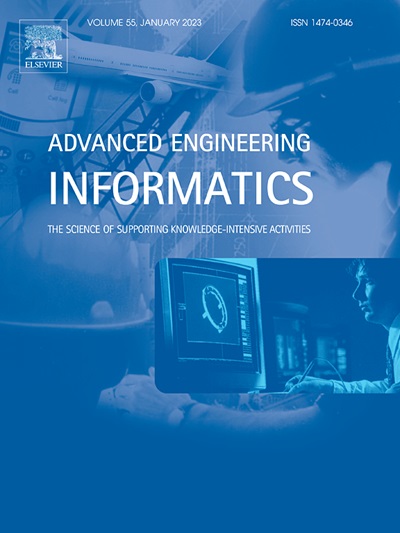An integrated design concept evaluation method based on fuzzy weighted zero inconsistency and combined compromise solution considering inherent uncertainties
IF 8
1区 工程技术
Q1 COMPUTER SCIENCE, ARTIFICIAL INTELLIGENCE
引用次数: 0
Abstract
Design concept evaluation (DCE) is crucial at the new product development stage, and effective evaluation can validate the feasibility of the new product and reduce project risks. Many valuable DCE methods have been introduced to identify the optimal one among several design concepts. However, previous methods have some drawbacks, such as the manipulation of multiple uncertainties, the determination of weights, and the identification of the best concept. To solve these problems, this paper develops a novel DCE model based on q-rung orthopair fuzzy rough (q-ROFR) sets, which employs the fuzzy-weighted zero inconsistency (FWZIC) and combined compromise solution (CoCoSo) methods. First, an evaluation environment for q-ROFR sets is provided by integrating the advantages of q-rung orthopair fuzzy sets and rough approximations, and some novel q-ROFR Einstein aggregation operators are introduced to aggregate the information to handle uncertainties more effectively. On this basis, the FWZIC method is adopted to determine the weights of criteria more reliably, and the CoCoSo method is utilized to evaluate the performance of the alternatives to determine the optimal solution more accurately and flexibly. Finally, a case study regarding the DCE of horizontal machining centers, sensitivity analysis, and comparisons are presented to validate the superiority of the proposed model. Results show that the proposed method is effective and can identify the best concepts more reliably.
求助全文
约1分钟内获得全文
求助全文
来源期刊

Advanced Engineering Informatics
工程技术-工程:综合
CiteScore
12.40
自引率
18.20%
发文量
292
审稿时长
45 days
期刊介绍:
Advanced Engineering Informatics is an international Journal that solicits research papers with an emphasis on 'knowledge' and 'engineering applications'. The Journal seeks original papers that report progress in applying methods of engineering informatics. These papers should have engineering relevance and help provide a scientific base for more reliable, spontaneous, and creative engineering decision-making. Additionally, papers should demonstrate the science of supporting knowledge-intensive engineering tasks and validate the generality, power, and scalability of new methods through rigorous evaluation, preferably both qualitatively and quantitatively. Abstracting and indexing for Advanced Engineering Informatics include Science Citation Index Expanded, Scopus and INSPEC.
 求助内容:
求助内容: 应助结果提醒方式:
应助结果提醒方式:


